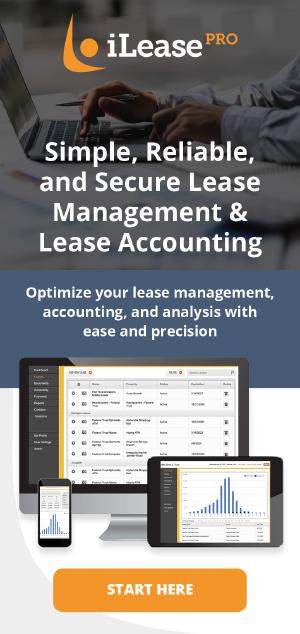How to Manage Costs Effectively in Lease Management
Cost Management in the context of lease management refers to the strategic process of planning, controlling, and optimizing costs associated with a company’s leased assets, including real estate, equipment, and vehicles. Effective cost management ensures that a business minimizes expenses, improves financial efficiency, and complies with relevant accounting standards such as ASC 842 or IFRS 16.
Key Components of Cost Management in Lease Management
1. Lease Cost Optimization
Negotiation of Lease Terms: Securing favorable lease terms during renewals or new agreements can significantly reduce rent, maintenance, and other operating costs. For instance, negotiating a lower base rent or limiting annual escalation clauses helps cut long-term expenses.
Benefit: Reduced recurring costs enhance financial stability and allocate savings to core business functions.
Consolidation of Leases: Combining multiple leases under one agreement or renegotiating with the same lessor can lead to economies of scale. This strategy simplifies management and often results in better pricing.
Benefit: Achieving bulk discounts and operational simplicity.
Assessing Market Rates: Regularly benchmarking against market rates ensures lease agreements remain competitive. This practice helps businesses avoid overpaying for their assets.
Benefit: Cost savings through informed adjustments to lease terms.
2. Utilization and Space Efficiency
Monitoring Leased Asset Utilization: Conducting utilization reviews identifies underused assets, enabling businesses to divest or repurpose them.
Benefit: Eliminates wasteful spending on idle resources.
Space Optimization Strategies: Implementing strategies like shared workspaces or hot-desking reduces excess capacity and associated costs.
Benefit: Optimized use of leased spaces leads to direct cost reductions.
3. Centralized Lease Management
Leveraging Lease Management Software: Platforms like iLeasePro provide a centralized view of all lease-related data. These tools help track, analyze, and control expenses while offering automated alerts for key milestones such as renewals or terminations.
Benefit: Improved decision-making and avoidance of unnecessary cost escalations.
4. Compliance and Accounting Integration
Accounting Standards Compliance: Adhering to standards like ASC 842 or IFRS 16 ensures accurate reporting of lease liabilities and expenses. Mismanagement can lead to penalties and financial statement errors.
Benefit: Avoidance of fines and enhanced financial transparency.
5. Cost Allocation and Budgeting
Allocating Lease Costs: Assigning costs to specific departments or projects offers detailed insights into expense drivers.
Benefit: Better accountability and strategic resource allocation.
Developing Lease Cost Budgets: Aligning lease budgets with business priorities keeps overall spending under control.
Benefit: Financial discipline and focused spending.
6. Review of Ancillary Costs
Auditing Operating Costs: Lease agreements often include ancillary costs like maintenance, insurance, and utilities. Regular audits can uncover opportunities for cost savings.
Benefit: Reduced operational costs through better oversight.
Transitioning to Net Leases: Shifting to net leases, where tenants pay specific expenses directly, provides clarity and control over ancillary costs.
Benefit: Increased transparency and simplified cost management.
7. Portfolio Rationalization
Periodic Portfolio Reviews: Regular assessments of lease portfolios help identify opportunities to terminate, downsize, or renegotiate leases.
Benefit: Reduced holding costs and streamlined asset use.
Subleasing or Selling Unused Assets: Offloading underutilized leases reduces expenses and generates additional income.
Benefit: Improved cash flow and resource optimization.
8. Technology Integration
Advanced Analytics and Reporting: Modern lease management systems offer powerful analytics to identify cost-saving opportunities.
Benefit: Data-driven insights enable proactive decision-making.
Predictive Modeling: Forecasting future lease expenses aids in strategic planning and budgeting.
Benefit: Enhanced preparedness for financial and operational changes.
Benefits of Cost Management in Lease Management
- Cost Savings: Direct and indirect expense reductions lead to healthier financial performance.
- Improved Cash Flow: Effective payment scheduling enhances liquidity and operational flexibility.
- Risk Mitigation: Proactively addressing renewal and termination clauses avoids unforeseen costs.
- Regulatory Compliance: Alignment with accounting standards prevents fines and audit issues.
- Enhanced Decision-Making: Clear visibility into lease expenses supports strategic initiatives.
Implementing Lease Cost Management: A Lease Cost Management Framework
1. Planning
- Lease Portfolio Analysis: Evaluate the company’s existing leases to identify cost drivers, underutilized assets, and opportunities for renegotiation.
- Market Research: Regularly benchmark lease terms and rates against industry standards to ensure competitiveness.
- Strategic Objectives: Define clear goals for cost management, such as reducing overall lease costs by a specific percentage or optimizing space utilization.
Benefit: Establishes a clear roadmap for cost optimization and ensures alignment with business priorities.
2. Implementation
- Lease Negotiation: Engage in proactive negotiations during renewals or new agreements to secure favorable terms.
- Centralized Management: Use lease management platforms like iLeasePro to consolidate lease data, automate reminders, and streamline processes.
- Cost Allocation Systems: Implement systems to allocate lease costs across departments or projects, providing granular visibility into expenses.
Benefit: Streamlined processes and enhanced control over lease-related costs.
3. Monitoring
- Regular Audits: Conduct periodic reviews of lease agreements and ancillary costs, such as maintenance and utilities, to identify discrepancies and opportunities for savings.
- Utilization Tracking: Monitor the use of leased assets to ensure they align with operational needs and eliminate waste.
- Compliance Checks: Regularly verify compliance with accounting standards like ASC 842 or IFRS 16 to avoid penalties.
Benefit: Continuous oversight reduces the risk of cost overruns and ensures regulatory compliance.
4. Optimization
- Portfolio Rationalization: Assess the lease portfolio to identify leases that can be terminated, consolidated, or renegotiated for better terms.
- Technology Integration: Leverage advanced analytics and predictive modeling tools to forecast lease expenses and identify cost-saving opportunities.
- Space Optimization: Implement strategies to maximize the efficiency of leased spaces, such as flexible work arrangements or shared spaces.
Benefit: Long-term cost reductions and improved operational efficiency.
5. Review and Adjust
- Feedback Loops: Establish mechanisms to gather feedback from stakeholders on the effectiveness of lease cost management strategies.
- Key Performance Indicators (KPIs): Track metrics such as total lease cost savings, compliance rates, and asset utilization.
- Continuous Improvement: Use insights from performance reviews to refine and adapt cost management strategies.
Benefit: Ensures strategies remain effective and aligned with evolving business needs.
Integrating a structured cost management strategy into lease management enables organizations to achieve financial efficiency, operational agility, and regulatory compliance. By leveraging tools like iLeasePro and focusing on key components such as cost optimization, space efficiency, and compliance, businesses can enhance the overall performance of their leased asset portfolios and drive long-term success.



